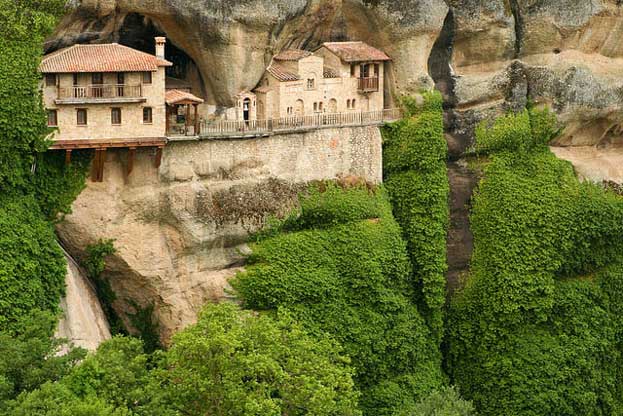Moteora Monasteries Greece
In a region of almost inaccessible sandstone peaks, monks settled on these 'columns of the sky' from the 11th century onwards. Twenty-four of these monasteries were built, despite incredible difficulties, at the time of the great revival of the eremetic ideal in the 15th century. Their 16th-century frescoes mark a key stage in the development of post-Byzantine painting. Suspended in the air' (the meaning of Meteora in Greek), these monasteries represent a unique artistic achievement and are one of the most powerful examples of the architectural transformation of a site into a place of retreat, meditation and prayer. The Meteora provide an outstanding example of the types of monastic construction which illustrate a significant stage in history, that of the 14th and 15th centuries when the eremitic ideals of early Christianity were restored to a place of honour by monastic communities, both in the Western world and in the Orthodox Church.

Continent: Europe
Country: Greece
Category: Mixed Heritage
Criterion: (I)(II) (IV) (V) (VII)
Date of Inscription: 1988
Moteora monasteries
Monasteries built under impossible conditions, with no practicable roads, permanent though precarious human habitations subsist to this day in the Meteora, but have become vulnerable under the impact of time. The net in which intrepid pilgrims were hoisted up vertically alongside the 373 m cliff where the Varlaam monastery dominates the valley symbolizes the fragility of a traditional way of life that is threatened with extinction.
 |
| Monastery at Highpoint Rock |


